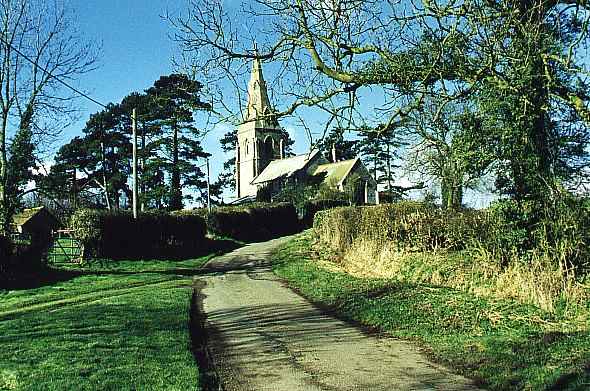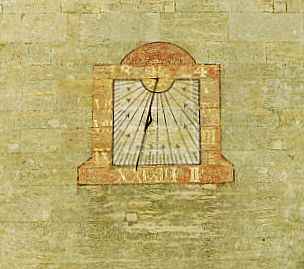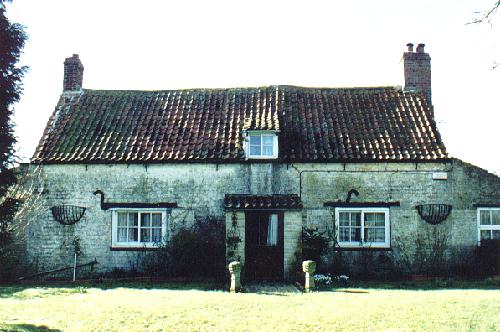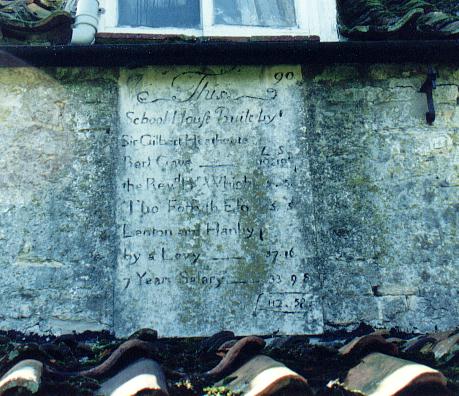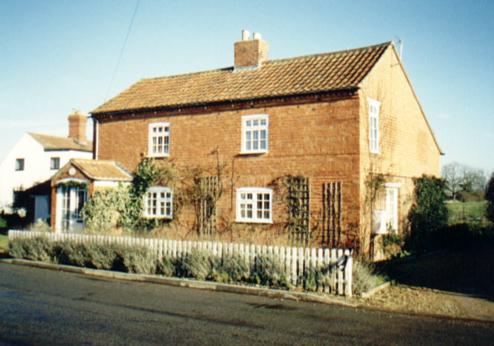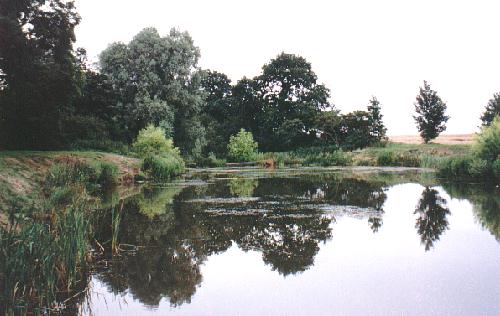|
Lenton
Lenton is one of the lonely hamlets on the uplands north west of Bourne and it is also known as Lavington, although Lenton is the preferred name. It is approached by narrow roads and there is a particularly fine view if you drive in from Keisby, with the distinctive broach spire of St Peterís Church on the side of a hill marking the way.
This is a most unusual piece of Tudor renaissance design from 1605, a three-decker marble monument rising like a great reredos, adorned with little Corinthian columns, 24 coats of arms and other heraldic devices and long inscriptions, and is borne upon six legs with carved spears, axes and baskets of fruit. The Armyne family seat was Osgodby Hall, a moated manor house built a mile away during the 16th century but pulled down in recent times. In the south aisle is a piscina and on a nearby bracket is a small stone tablet with a carved figure of a Roman soldier. It was unearthed on a farm near here and brought into the church for safe keeping. On the list of vicars in the church is the name of Edward Bradley, who as Cuthbert Bede was author of much kindly, humorous writing including The Adventures of Mr Verdant Green. He was a tireless worker for the social, intellectual, and spiritual life of his people during the 19th century.
South east of the church is Ye Olde School House, tucked away down a cart track behind hedges and trees. It was originally two single storey cottages, built for woodsmen around 300 years ago and in the late 18th century they were converted into a school for five children by the local landowner Sir Gilbert Heathcote, baronet. There is a wealth of old beams inside and the cottage is now a Grade II listed building. It is surrounded by small streams and is virtually an island with a large pond in the front which dries up during periods of drought because of water extraction in the vicinity. A stone tablet over the tiny porch records for posterity that the school was built and opened in 1790 at a cost of £112 5s. 8d. Sir Gilbert contributed ten guineas, the Rev Dr Wright five guineas, Thomas Forsyth Esq five guineas, a levy on Lenton and Hanby raised £37 16s. 0d and the salary of a schoolmaster for seven years totalled £33 9s. 8d. There are many attractive properties in this small and isolated community, among them Honeysuckle Cottage, built in attractive red brick and possibly dating back to the late 18th century.
Lavington Lake takes you by surprise as you round a bend near Lenton on a back road off the A15 north west of Bourne, for this is a haven for coarse fishermen in a sea of corn fields. The farmer who owns the land issues day tickets for the privilege of fishing this attractive stretch of water which is home to a variety of wild geese and ducks and stocked with carp, rudd and roach, but the fish have a chance because only barbless hooks are allowed while ground bait and keep nets are banned. Go to: Main Index Villages Index |
